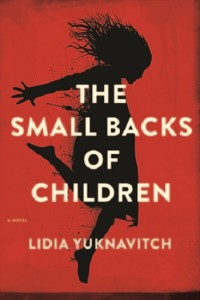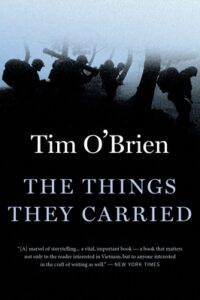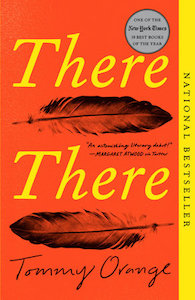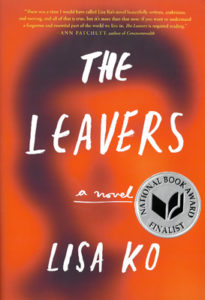
Letting the Unspoken Speak: A Reading List of Historical Trauma in Fiction
Etaf Rum Recommends Lisa Ko, Tommy Orange, Lan Cao, and More
My sophomore novel, Evil Eye, follows Yara Murad, a Palestinian American woman who begins to confront the psychological and interpersonal aftermath of her emotionally volatile childhood as her carefully constructed life begins to fall apart. In drafting this novel, which explores post-traumatic consciousness, I was acutely aware of the daunting task that lay before me. The story I sought to tell—how the collective trauma, suffering, and displacement resulting from the 1948 Nakba left an indelible mark on one Palestinian family—was one that delved deep into the intricacies of trauma, specifically the kind of trauma that defies easy explanation and transcends the boundaries of the human mind.
It was a narrative that demanded sensitivity, precision, and a profound understanding of the characters’ experiences. Yet, as I dove into the writing process, I felt the weight of my own limitations as a writer and found myself grappling with an overwhelming frustration. The frustration stemmed from my unwavering commitment to “get the story right,” to capture the essence of the inherited and intergenerational trauma of this family in all its complexity.
I knew that the trauma experienced by the Palestinian community was not confined to individual lifetimes but had been passed down like an heirloom of suffering. It was a legacy of displacement, violence, and loss that had left indelible scars on the collective psyche. The history of the Israeli occupation, marked by conflict, dispossession, and the struggle for identity and homeland, had left a profound and lasting imprint on the Palestinian people.
I also grappled with the fear that I might inadvertently sensationalize or exploit the trauma of the Palestinian community for the sake of the narrative. It was essential to me that the story be authentic and respectful, but the line between authenticity and exploitation felt perilously thin. I questioned how to depict the ways in which the effects of trauma manifested in the lives of Yara and her family. Their experiences were a microcosm of the larger Palestinian experience, and I felt a tremendous responsibility to do justice to their stories while simultaneously representing the broader historical context.
What’s more, there was also a great emotional toll in immersing myself in this narrative. It was a deeply personal and painful journey confronting the weight of historical injustice and the ongoing struggle for recognition and justice. I wanted to capture the anguish of a people who had endured so much, to depict their resilience in the face of seemingly insurmountable odds, and to shed light on the ways in which trauma had infiltrated every aspect of their lives.
Yet I persisted in my writing, driven by the belief that literature has the power to illuminate the darkest corners of human experience. My hope was that Evil Eye would serve as a bridge, allowing readers to glimpse into the heart of Palestinian intergenerational trauma and the enduring impact of the Israeli occupation. It was a challenging endeavor, but it was also a profoundly meaningful one, as it allowed me to contribute to a greater understanding of a deeply painful and complex history that deserved to be acknowledged and explored.
Here are eight books, each revolving around a historical collective trauma, that explore the question of how to represent the unrepresentable. In each of these novels, trauma is a central theme that shapes the lives of the characters and influences their choices, relationships, and identities. The authors skillfully depict the multifaceted nature of trauma and its enduring impact, providing readers with profound insights into the human experience. These literary works serve as a reminder that, as storytellers, our most impactful narratives often emerge when we allow the silence and the unspoken to speak for themselves.
*

Lydia Yuknavitch, The Small Backs of Children
This novel examines trauma in the context of war and artistic expression. It portrays the trauma of war as a haunting force that affects not only the soldiers but also the lives of artists who attempt to capture the horrors of conflict. The novel explores the enduring impact of trauma on creativity, identity, and relationships.

Tim O’Brien, The Things They Carried
In this collection of interconnected stories about the Vietnam War, trauma is portrayed as a relentless companion of soldiers. O’Brien vividly depicts the physical and emotional burdens borne by the characters and how the trauma of war permeates their memories and influences their choices.

Arundhati Roy, The God of Small Things
This novel explores the trauma of family dysfunction, societal expectations, and the rigid caste system in India. The characters in the story carry the trauma of their childhood experiences into adulthood, affecting their relationships, self-esteem, and the choices they make.

Tommy Orange, There, There
Trauma is a pervasive theme in this novel, particularly intergenerational trauma experienced by Native Americans. It portrays how historical injustices, cultural displacement, and systemic oppression have left deep scars on the characters. The novel also highlights the resilience and strength of the characters as they grapple with their traumatic histories.

Lisa Ko, The Leavers
This novel explores the trauma of family separation and the immigrant experience. It delves into the emotional and psychological turmoil of a young boy who is taken from his mother and placed in foster care. The book also examines the trauma of his mother, who faces deportation and the loss of her child.

Jonathan Safran Foer, Extremely Loud and Incredibly Close
Trauma is central to this novel, particularly in the aftermath of the 9/11 attacks. It portrays the trauma of loss and grief as the young protagonist navigates the emotional landscape of losing his father in the World Trade Center. The novel explores the ways in which trauma can lead to a quest for understanding and connection.

Lan Cao, Monkey Bridge
This novel depicts the trauma of war and the immigrant experience within the Vietnamese-American community. It delves into the challenges of adapting to a new culture while carrying the emotional baggage of war-related trauma and loss. The book also explores the cultural divide between generations and the difficulties of reconciliation.

Anne Tyler, Dinner at the Homesick Restaurant
Trauma is portrayed through the lens of family dynamics and the long-lasting effects of childhood experiences. The novel explores how the trauma of a dysfunctional family affects the choices and emotional well-being of its members throughout their lives.
______________________________

Evil Eye by Etaf Rum is available via Harper.
Etaf Rum
Etaf Rum was born and raised in Brooklyn, New York, by Palestinian immigrants. She teaches college English literature in North Carolina, where she lives with her two children. She also runs the Instagram account @booksandbeans. A Woman Is No Man is her first novel. Her second novel, Evil Eye, is available now.



















